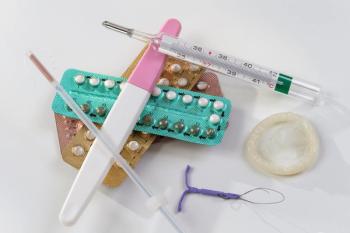
Careful diagnosis of UTIs can prevent overprescribing of antibiotics
Why ‘diagnostic stewardship’ is important for physicians
Urinary tract infections (UTI), a common bacterial infection of any part of the urinary tract-the kidneys, urethra, ureter or bladder-are common infections typically affecting cisgender women more than men.
In order to avoid prescribing unnecessary antibiotics, its important for physicians to determine a few important factors before diagnosing and treating these infections, says Amesh Adalja, MD, a senior scholar at the Johns Hopkins Center for Health Security in Baltimore, Md.
Adalja promotes what he calls “diagnostic stewardship,” or taking care not to call something a UTI without hard evidence. “If the person doesn’t have urinary symptoms, in most cases they’re not going to have a UTI,” he says.
Adalja says it’s important to begin a UTI assessment by asking the patient to describe their symptoms. UTIs typically cause a variety of uncomfortable symptoms such as burning sensations in the bladder or urethra, painful urination, bright or foul-smelling urine, and pelvic pain among others, but they are generally responsive to oral antibiotics.
If there are no such symptoms, but bacteria is present in the urine lab culture, he does not recommend treating the patient with antibiotics unless blood work reveals signs of infection.
“It’s important to know that the bladder, and urine, is not sterile. You have a microbiome, and bacteria that live there. Some people have bacteria as a result of bladder problems or diabetes,” he says.
If patients are asymptomatic, and blood work does not reveal any signs of infection, it really shouldn’t be considered an infection, Adalja says.
He says that sometimes physicians misinterpret lab data that merely points out that bacteria is present to mean there is an infection present, too.
“Many people who have been labeled as having chronic UTIs really don’t have them. They have chronic bacteria in the urine that is always there whenever someone checks, and they get course after course of antibiotics even though they have no symptoms.”
On the other hand, if a patient does have symptoms that fit with the signs of a UTI but signs of infection do not appear in the lab work, or antibiotics do not treat the symptoms, he recommends looking for structural abnormalities that may be affecting kidneys, bladder and the tubes that run between those organs.
“These would require a urological evaluation to see if there is a polyp or cyst in the bladder or something predisposing them to get a UTI,” Adalja says.
Adalja also stresses that context really matters in diagnosing UTIs. The causes and likelihood of infection differ from case to case and between genders.
Cisgender men, for example, are far less likely to have UTIs. Adalja says if men are showing up with what looks like recurrent UTIs, unless they have recently been catheterized, which can introduce bacteria-or have a prostate condition-where urine can become trapped in the bladder-a physician should look for other underlying causes.
“Sexually transmitted infections in men are also something to think about. Chlamydia and gonorrhea can cause symptoms that are similar to UTIs. Men can also get prostate infections,” Adalja says.
Also, the age and reproductive stage of female patients has an influence on their likelihood of getting UTIs.
“Estrogen has some effect on the bacteria in the area around the urinary tract. The estrogen deficiency that occurs in postmenopausal women can sometimes predispose them to UTIs. There are physicians who will give topical estrogen to these women in order to influence the bacteria and prevent UTIs.”
This is in contrast to a younger, sexually active woman for whom the recommendation may be to urinate after sexual activity or drink more water, which can help to flush out a UTI.
Then, there is the question of whether a UTI is actually chronic-meaning it isn’t responding to treatment-or it is recurrent, meaning the patient multiple infections over a period of time.
“Those are two different problems. If somebody doesn’t get better after treatment it’s likely because the bacteria has very high resistance, or it wasn’t the correct antibiotic. If someone has a recurrent UTI, you want to find out if it is the same organism, and routine microbiology testing will tell you that.”
Newsletter
Stay informed and empowered with Medical Economics enewsletter, delivering expert insights, financial strategies, practice management tips and technology trends — tailored for today’s physicians.














